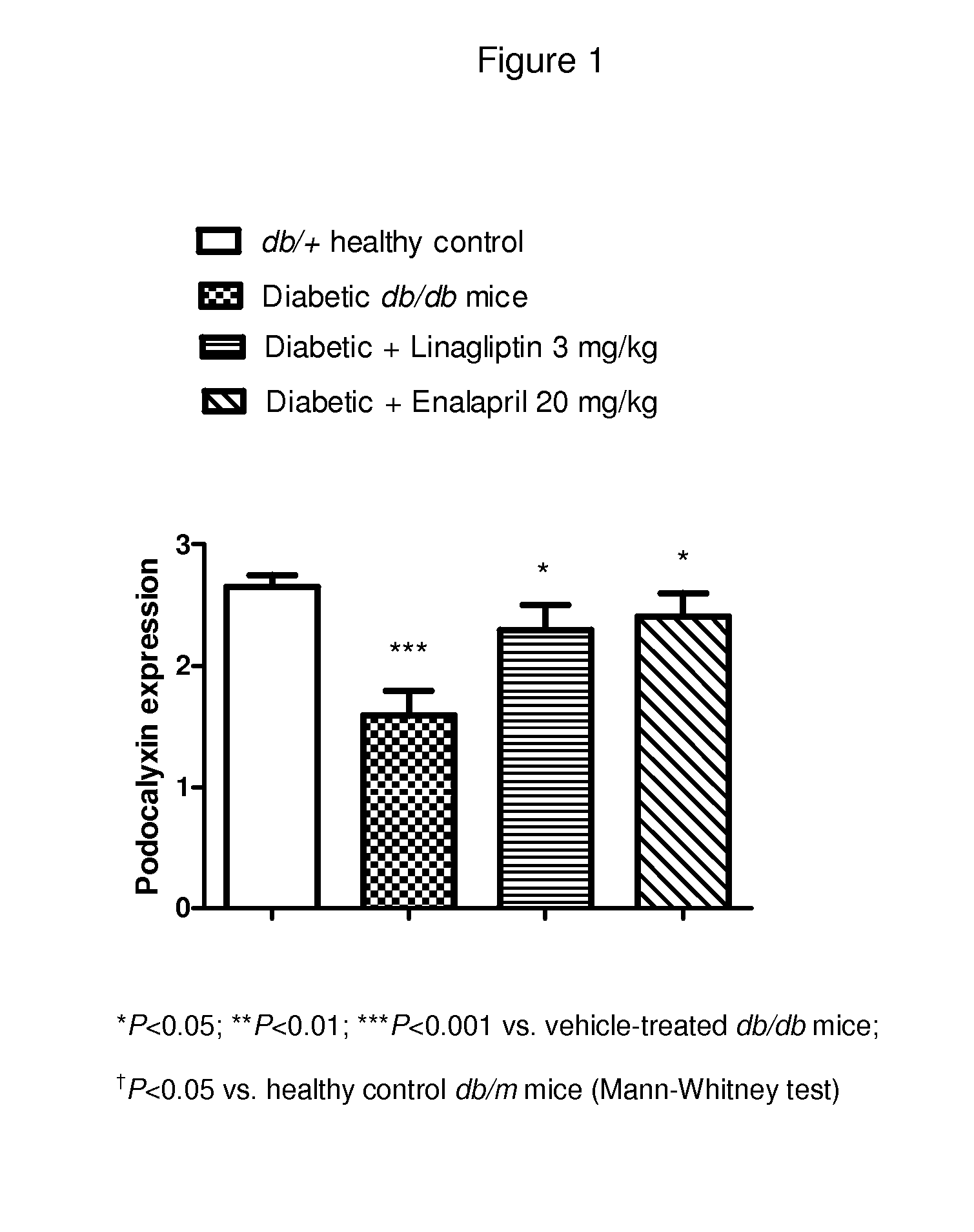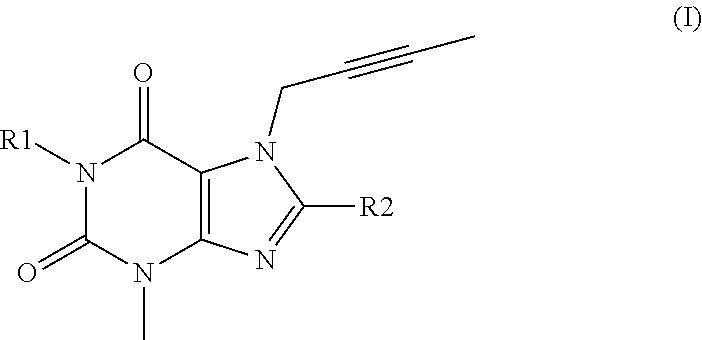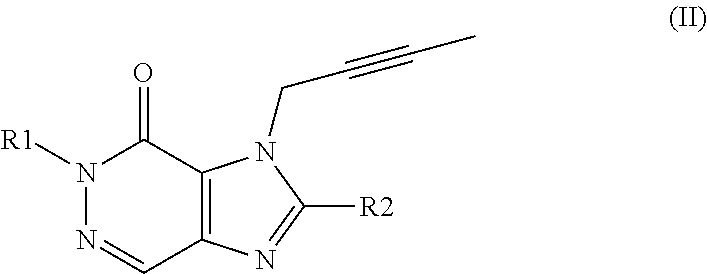Use of a dpp-4 inhibitor in podocytes related disorders and/or nephrotic syndrome
a podocyte related disorder and inhibitor technology, applied in the field of dpp4, can solve the problems of ineffective treatment, undesirable systemic adverse effects, and progressive kidney disease, and achieve the effects of reducing or delaying the onset or reducing the risk of or delaying the onset or slowing the progression of renal morbidity and/or mortality, and reducing or delaying the onset or progression
- Summary
- Abstract
- Description
- Claims
- Application Information
AI Technical Summary
Benefits of technology
Problems solved by technology
Method used
Image
Examples
examples
Reduction in Loss of Podocytes; Expression of Podocalyxin as a Marker of Podocyte Integrity
[0360]The expression of podocalyxin is analyzed by immunohistochemistry using a podocalyxin specific antibody. Kidney sections from male diabetic db / db mice (10 weeks old at start and treated for 3 months) in the following groups are analyzed:
[0361]Diabetic control (n=10), linagliptin 3 mg / kg (n=8), enalapril 20 mg / kg (n=10) and heterozygous control mice (n=8).
[0362]All of the evaluations of the glomerular staining intensities are done semiquantitatively by two different experts of kidney pathology blinded for the slides.
[0363]The predefined scoring gradient is 0, 1, 2, and 3. 0 means no expression, whereas 3 is given when expression is highest. Group means are compared with a non-parametric test. P values less than 0.05 are considered significant.
[0364]FIG. 1 shows the expression of podocalyxin as a marker for podocyte integrity in linagliptin-, enalapril- or vehicle-treated diabetic db / db mi...
PUM
| Property | Measurement | Unit |
|---|---|---|
| waist circumference | aaaaa | aaaaa |
| waist circumference | aaaaa | aaaaa |
| waist circumference | aaaaa | aaaaa |
Abstract
Description
Claims
Application Information
 Login to View More
Login to View More - R&D
- Intellectual Property
- Life Sciences
- Materials
- Tech Scout
- Unparalleled Data Quality
- Higher Quality Content
- 60% Fewer Hallucinations
Browse by: Latest US Patents, China's latest patents, Technical Efficacy Thesaurus, Application Domain, Technology Topic, Popular Technical Reports.
© 2025 PatSnap. All rights reserved.Legal|Privacy policy|Modern Slavery Act Transparency Statement|Sitemap|About US| Contact US: help@patsnap.com



